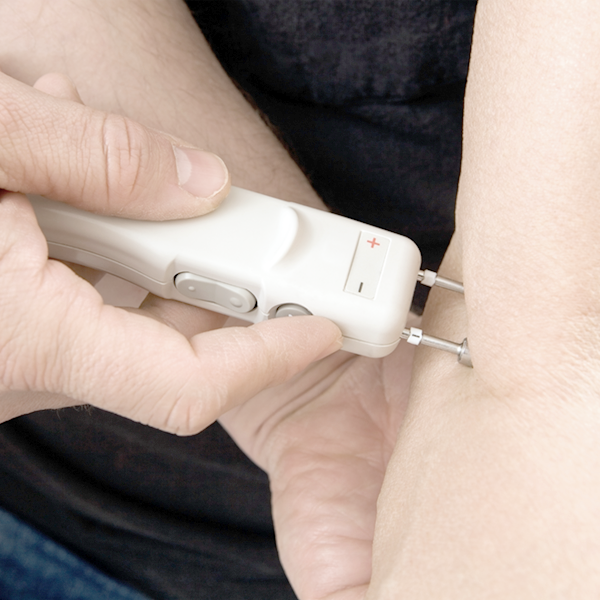Learn more about the non-surgical options we offer to treat your pain.




At Synergy Spinecare and Rehabilitation, we start by listening to you. By taking the time to conduct a detailed medical history – and by listening to you explain where it hurts, when, and how, we gain important insights. We couple that with a comprehensive physical examination to further pinpoint and confirm a proper diagnosis. We may conduct other diagnostic procedures as well, such as Electromyography and Nerve Conduction Studies which can help us identify specific muscles or nerve groups that may be the root cause of your pain. But our approach to pain treatment always begins with this first and most important step of listening carefully to what you have to say.
Electromyography (EMG) and Nerve Conductions Studies (NCS) are diagnostic procedures that measure voltage and electric current to locate and gauge the extent of injury or damage to muscles and nerves in the body. At Synergy Spinecare and Rehabilitation Medicine we are trained in when and how to use these advanced diagnostic tools to help us arrive at a precise and accurate diagnosis for what’s causing your pain. We use these results of these studies to develop a customized pain treatment plan.
Physical Therapy (PT) is the most common treatment we prescribe. It is used on its own, or in combination with other procedures, to relieve pain and increase strength, flexibility, mobility, balance and more. PT is a major component of many surgical recovery plans – and can be effective for helping avoid surgery altogether, too. Young or old, athletic or otherwise, hands-on Physical Therapy is a safe, effective and enjoyable way to recover from and alleviate muscle, joint and nerve pain.
Epidural Steroid Injections (ESIs) can be highly effective for managing and treating neck, back and leg pains. ESIs are effective for reducing inflammation – but they don’t actually treat any underlying conditions. So we use them most often in combination with other appropriate treatments, such as hands-on Physical Therapy, to deliver effective and lasting pain relief from injuries or chronic conditions.
Facet Joint Blocks (or Injections) and Selective Nerve Root Blocks (or Injections) are used both diagnostically and therapeutically. A local anesthetic and steroid are injected directly into either the facet joints of the spine or specific nerve roots. Diagnostically, the injections help to locate the exact nerve or nerve groups that are the source of pain. Therapeutically the injections are used to provide temporary pain relief, making it possible to perform Physical Therapy and daily living tasks comfortably.
Radio Frequency Neurotomy, sometimes called Radio Frequency Ablation, is a non-invasive intervention used to provide temporary relief from neck and back pain. This procedure uses heat generated by radio waves to block pain signals from specific nerves. Patients who have not responded to more conservative pain and rehabilitation treatments, such as Physical Therapy may be good candidates for Radio Frequency Neurotomy.
Ganglion Impar (Coccyx) Blocks are minimally invasive procedures used to diagnose or treat pain in the lower back. Diagnostically, the procedure may be used to identify and isolate the source of pain. Therapeutically, the procedure can eliminate or significantly reduce pain.
Trigger Point Injections are common and effective pain treatments for muscle spasms and knots, often in the areas of the upper back and behind the shoulders. Trigger Point Injections reduce inflammation and help to relax and release muscles and are often used in combination with Physical Therapy.